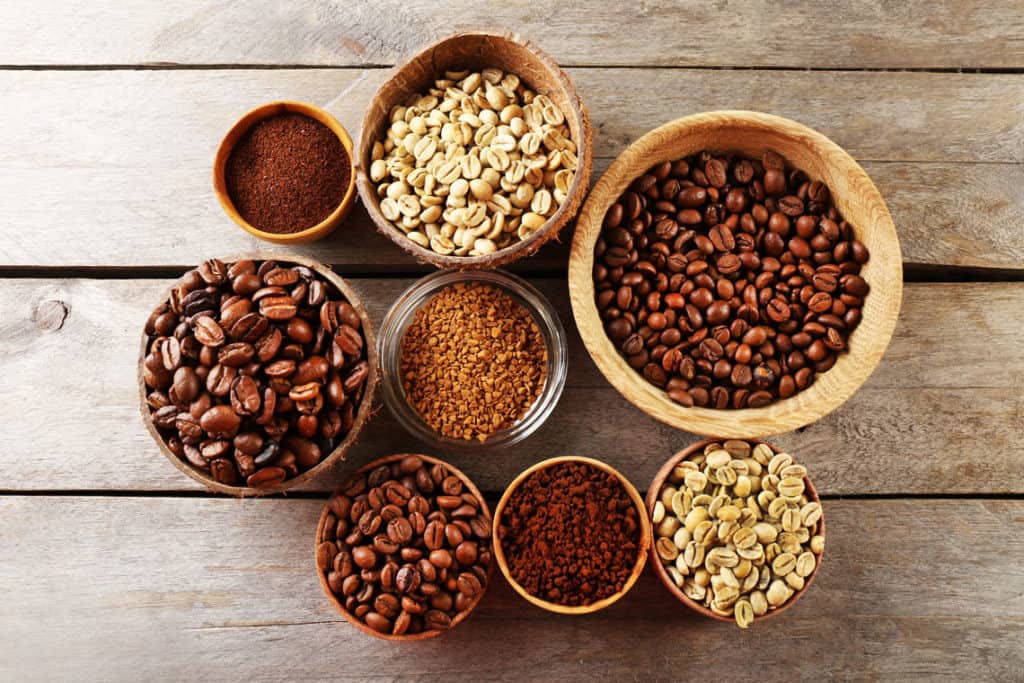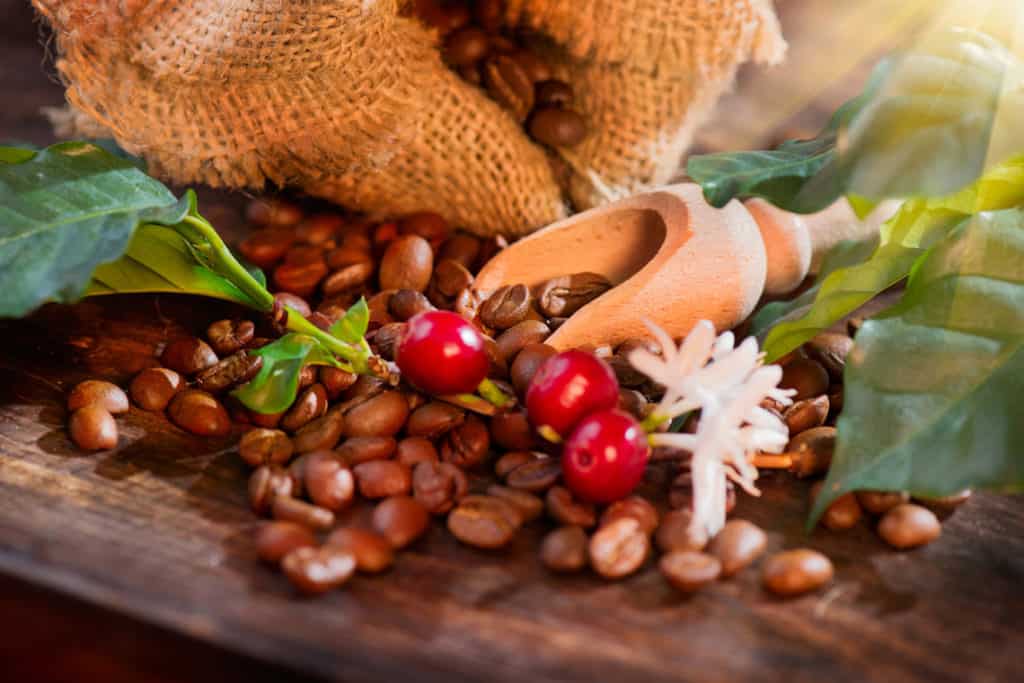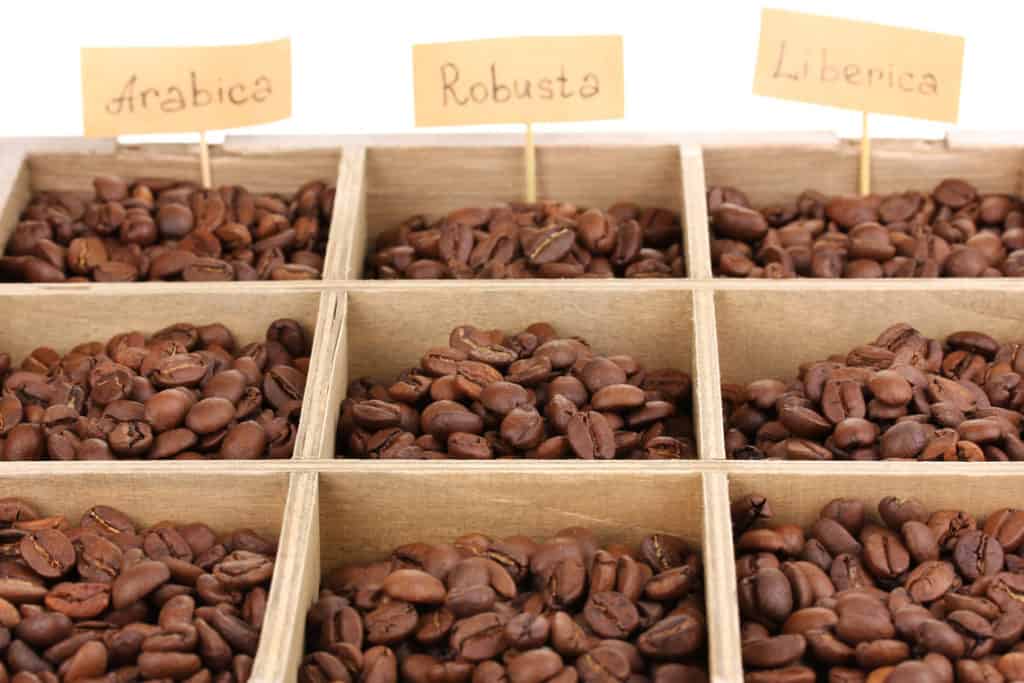If you’re an espresso aficionado, a pour-over devotee, or simply someone whose mornings demand a rich, soul-warming cup of coffee, you’ll agree that the magic starts with the right beans. This blog post gives you the tools to choose the very best coffee beans that sync with your taste and brewing style.
Unraveling the Factors that Shape the Taste of Coffee Beans
Handpicking superior coffee beans is the cornerstone of brewing an exquisite cup of coffee at home. The roast degree, origin, freshness, and grind size are just a few elements that sculpt the flavor and quality of your brew.
The Impact of Roast Level
Roast degree plays a leading role in defining the color, body, acidity, and bitterness of your beans. Broadly, there are three main roast categories: light, medium, and dark.
Light roasts, sporting a light brown hue, preserve the intrinsic flavor and acidity of the beans, crafting a delicate, vibrant brew.
Medium roasts, with their characteristic medium brown color, cultivate a more harmonious flavor and aroma profile, promising a velvety and rich coffee experience.
Dark roasts, boasting a dark brown or jet-black color, pack a more robust and bitter flavor and aroma, perfect for those who relish a gutsy, smoky cup of coffee.
However, keep in mind that roast-level labels aren’t standardized, and roasters might employ various names or terms for their roast levels. For instance, light roasts may also be called cinnamon, blonde, or city. Medium roasts might go by American, breakfast, or full city. Dark roasts are often dubbed French, Italian, or espresso.
Deduce the roast level of your coffee beans by observing their color or verifying the roast date on the coffee roaster’s bags or website. The color offers a visual hint about the roast level, while the roast date points to their freshness. For the best flavor, opt for coffee beans roasted within the past two weeks, as their flavor begins to taper off after that.
Effect of Origin
The origin of coffee beans, i.e., where they’re grown, has a profound influence on their flavor profile, quality, and price. Aspects like climate, soil composition, altitude, and processing methods in coffee-producing regions impart distinct characteristics to the beans, such as acidity, sweetness, body, and complexity.
For instance, Ethiopian coffees, particularly those from the regions of Yirgacheffe and Sidamo, often exhibit a bright acidity and a range of complex flavors. Brazilian coffees, for example, are often characterized by their nutty, chocolatey flavors with low acidity. Colombian coffees, on the other hand, are celebrated for their bright acidity, medium body, and a wide array of flavor notes including caramel, citrus, and floral undertones.
However, bear in mind that these are general descriptions, and there can be notable variations within each region. For a comprehensive understanding of the origin and growing conditions of your coffee beans, peruse the labels or descriptions on the roaster’s bags or website. These will typically offer a wealth of information about the country, region, farm, variety, altitude, processing method, and flavor profile of the beans.
Freshness: A Game Changer
The freshness of coffee beans is non-negotiable for a satisfying coffee experience. Coffee beans gradually lose their flavor and aroma due to oxidation, moisture, heat, and light. Fresh beans should appear shiny and exude a robust coffee aroma, whereas stale beans will appear lifeless and won’t have a strong smell.
To ensure maximum freshness, choose beans with a roast date rather than an expiration date, as coffee begins to lose its peak flavor mere weeks after roasting.
Ground Bean vs Whole Bean
It’s easy to reach for the bag of pre-ground coffee, but if you’re seeking an exceptional flavor experience, whole beans win the race hands down. The reason is simple – flavor deterioration starts ticking as soon as the beans are ground. So, grind your own beans just before brewing, and open the gates to fresh, aromatic coffee.
Traceability: A Stamp of Quality
Traceable coffee refers to beans with known origins down to the specific farm or cooperative. This traceability is synonymous with quality as these beans are meticulously grown, harvested, and processed. The added costs of keeping such beans separate are only justified for higher-quality produce. This ensures that your cup of coffee is the result of careful cultivation and selection.
Deciphering Coffee Tasting Notes
Coffee tasting notes on bean packaging may seem cryptic, but they’re your compass to navigate the wide coffee flavor landscape. Keep in mind:
Look beyond the literal: Coffee tasting notes are less of a hard-and-fast rule and more of a framework to perceive the coffee’s character. They are subjective and can vary between the provider and the consumer. So, rather than chasing the exact flavors, use these notes as your guide to explore the vast world of coffee aromas and tastes.
Prioritize by prominence: Coffee tasting notes are generally presented in the order of prominence. For example, “chocolate, caramel, cherry” indicates a chocolate-dominant flavor profile, followed by notes of caramel and a hint of cherry. The number of descriptors can also hint at the complexity of the coffee.
Play around with brewing methods and ratios: The flavors and aromas highlighted in coffee tasting notes can significantly change based on the brewing method and ratio used. For instance, a French press could yield a robust, full-bodied coffee, while a pour-over may deliver a clean and delicate flavor. Don’t hesitate to experiment with brewing techniques to discover your ideal flavor profile.
Embarking on a Coffee Bean Adventure: Discovering Your Personal Preference
Now that we’ve unraveled the variables influencing coffee bean flavor let’s venture into the fun part: identifying your personal coffee palate!
Experiment with Different Varieties and Blends
The fastest route to uncovering your coffee bean preferences is an exciting exploration of various varieties and blends. Buy small quantities of diverse beans from local roasters or online, brew at home, and savor the experience. Note the origin, roast level, and grind size of the beans and observe their effect on the flavor. Document the tastes, smells, and sensations, rating them based on your liking.
Consider delving into these distinct coffee bean varieties:
- Ethiopian Yirgacheffe: A light roast coffee delivering a floral and fruity punch with traces of jasmine, lemon, and peach.
- Colombian Supremo: This medium roast coffee unfolds a balanced taste canvas with caramel, nutty, and chocolaty notes.
- Mocha Java: A dark roast blend from Yemen and Indonesia, this concoction presents a complex, full-bodied flavor with hints of spice, earthiness, and chocolate.
Remember, these are just starters, and the world of coffee offers a vast arena of blends and varieties to discover. So, maintain an open mind and let your taste buds do the exploring!
Immerse Yourself in the Coffee Community: Learn from Experts and Enthusiasts
In your quest for perfect coffee beans, don’t overlook the value of connecting with the vibrant coffee community. From professional baristas and roasters to bloggers and enthusiasts, there’s a wealth of knowledge to tap into. Engage in forums and online communities where coffee lovers exchange their views on different beans.
Here are a few communities to consider joining:
- Reddit: Subreddits such as r/Coffee, r/Espresso, r/CoffeePorn host a plethora of discussions around coffee.
- Quora: Here, you can ask and answer coffee-related queries like, “What are some good coffee beans for beginners?” or “How do you brew coffee with a French press?”
- Facebook Groups: Communities such as “Coffee Lovers,” “Home Baristas,” “Specialty Coffee Association,” are fantastic platforms to connect with other coffee aficionados.
Remember, these are just starting points; countless other communities align with various interests and levels of coffee expertise.
Your Coffee Shopping Spree: Where to Buy Coffee Beans
Each mode of buying coffee beans – online, from local stores, or supermarkets – comes with its unique strengths and potential challenges.
Buying Coffee Beans Online:
Pros:
- Diverse range: Online retailers offer an extensive array of coffee beans varying in origin, roaster, and blend. You might even stumble upon exclusive or rare options.
- Cost-effectiveness: Purchasing online can be lighter on your pocket, especially when buying in bulk or availing subscription services that offer discounts and free shipping.
- Convenience: Order from the comfort of your home and have the beans delivered right at your doorstep.
Cons:
- Lack of physical inspection: You can’t see, smell, or taste the beans before buying, which might be a slight gamble.
- Delivery time: Depending on location and shipping speed, you may have to wait for your beans. This could impact freshness if the packaging and storage during transit aren’t up to the mark.
Buying Coffee Beans from Local Stores:
Pros:
- Supporting local businesses: Buying from local stores is a great way to support your local economy.
- Personal interaction: Interacting with sellers and customers can provide useful advice and recommendations.
- Pre-purchase inspection: Seeing, smelling, and sometimes tasting the beans before purchase adds to assurance and satisfaction.
Cons:
- Limited selection: You might not find the same level of variety as online.
- Potential cost: Overhead costs or markups may result in higher bean prices.
- Travel time: Purchasing from local stores requires time and effort to travel and browse through the selection.
Buying Coffee Beans from Supermarkets:
Supermarkets offer the comfort of buying coffee beans during your regular grocery run. They usually stock well-known brands, often at lower prices than specialty stores or online platforms. However, the freshness could be questionable due to longer storage times, and the selection of specialty beans might be limited. The lack of expert advice may also make it challenging for beginners to choose the right beans.
Conclusion
Deciphering the world of coffee beans may seem daunting at first, but with a dash of curiosity, a sprinkle of experimentation, and a solid understanding of the key considerations outlined in this guide, you’ll be well on your way to becoming a coffee connoisseur.
To quickly recap, remember that whole beans trump ground coffee for preserving freshness. Embrace traceable coffee to ensure the best quality, and make use of coffee tasting notes as your compass to navigate the diverse flavors and aromas that different beans offer.
Now, it’s time for action. Embark on your personal journey to discover your ideal coffee. Experiment with different beans, engage with the coffee community, and most importantly, enjoy each sip of your coffee brewed just the way you love. Coffee is an experience, not just a beverage, so take this knowledge, savor your brewing moments, and find your perfect cup!
Last Updated on June 18, 2023 by Cristina Vélez




